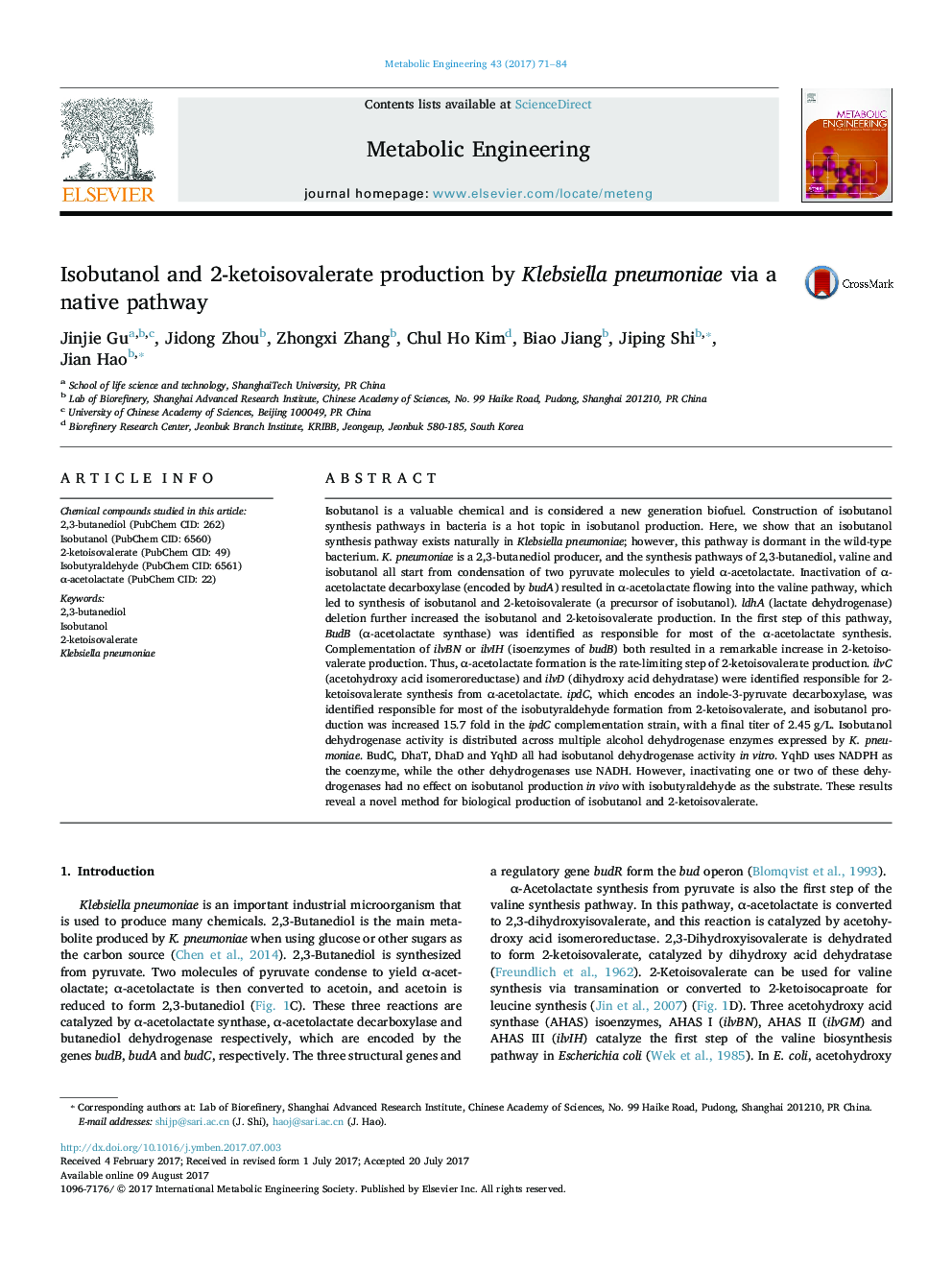| کد مقاله | کد نشریه | سال انتشار | مقاله انگلیسی | نسخه تمام متن |
|---|---|---|---|---|
| 4754784 | 1361475 | 2017 | 14 صفحه PDF | دانلود رایگان |

- An isobutanol synthesis pathway exists naturally in K. pneumoniae.
- budA knockout resulted in the production of 2-ketoisovalerate and isobutanol.
- budB is responsible for most of the α-acetolactate formation.
- ipdC is responsible for the conversion of 2-ketoisovalerate to isobutyraldehyde.
- Isobutanol dehydrogenase activity is distributed across multiple alcohol dehydrogenase.
Isobutanol is a valuable chemical and is considered a new generation biofuel. Construction of isobutanol synthesis pathways in bacteria is a hot topic in isobutanol production. Here, we show that an isobutanol synthesis pathway exists naturally in Klebsiella pneumoniae; however, this pathway is dormant in the wild-type bacterium. K. pneumoniae is a 2,3-butanediol producer, and the synthesis pathways of 2,3-butanediol, valine and isobutanol all start from condensation of two pyruvate molecules to yield α-acetolactate. Inactivation of α-acetolactate decarboxylase (encoded by budA) resulted in α-acetolactate flowing into the valine pathway, which led to synthesis of isobutanol and 2-ketoisovalerate (a precursor of isobutanol). ldhA (lactate dehydrogenase) deletion further increased the isobutanol and 2-ketoisovalerate production. In the first step of this pathway, BudB (α-acetolactate synthase) was identified as responsible for most of the α-acetolactate synthesis. Complementation of ilvBN or ilvIH (isoenzymes of budB) both resulted in a remarkable increase in 2-ketoisovalerate production. Thus, α-acetolactate formation is the rate-limiting step of 2-ketoisovalerate production. ilvC (acetohydroxy acid isomeroreductase) and ilvD (dihydroxy acid dehydratase) were identified responsible for 2-ketoisovalerate synthesis from α-acetolactate. ipdC, which encodes an indole-3-pyruvate decarboxylase, was identified responsible for most of the isobutyraldehyde formation from 2-ketoisovalerate, and isobutanol production was increased 15.7 fold in the ipdC complementation strain, with a final titer of 2.45 g/L. Isobutanol dehydrogenase activity is distributed across multiple alcohol dehydrogenase enzymes expressed by K. pneumoniae. BudC, DhaT, DhaD and YqhD all had isobutanol dehydrogenase activity in vitro. YqhD uses NADPH as the coenzyme, while the other dehydrogenases use NADH. However, inactivating one or two of these dehydrogenases had no effect on isobutanol production in vivo with isobutyraldehyde as the substrate. These results reveal a novel method for biological production of isobutanol and 2-ketoisovalerate.
Journal: Metabolic Engineering - Volume 43, Part A, September 2017, Pages 71-84